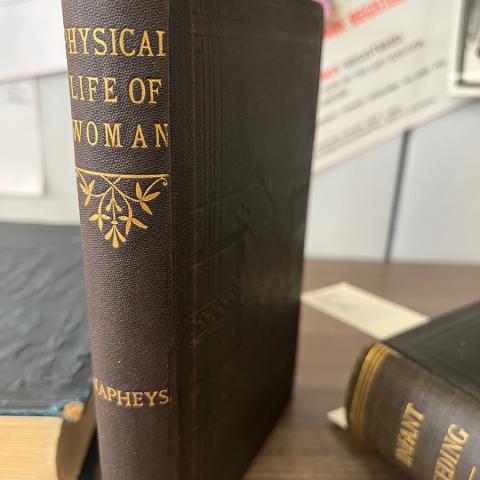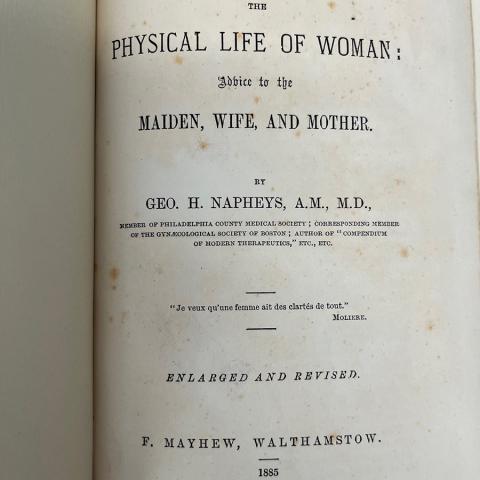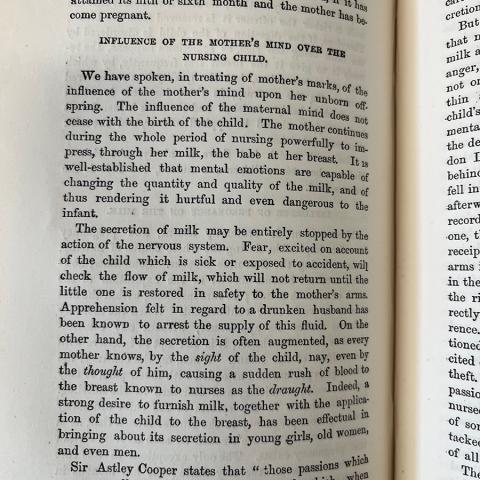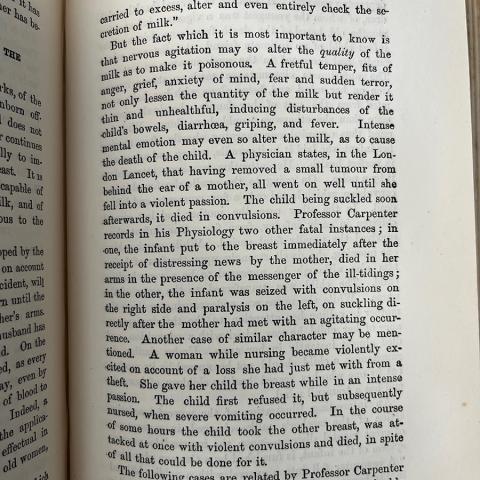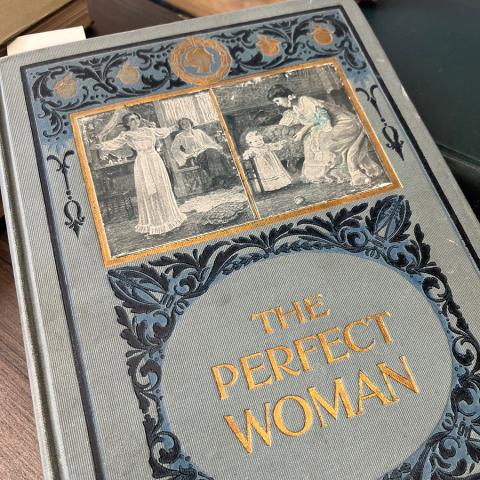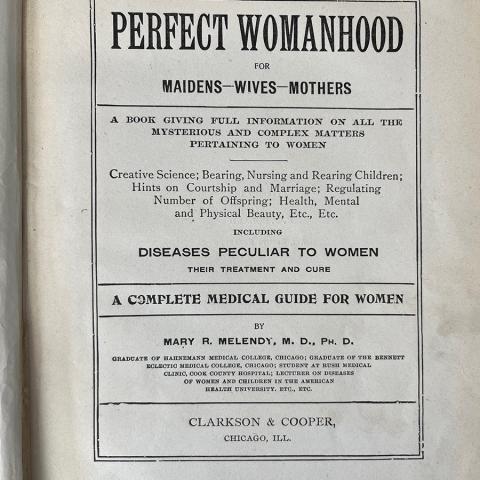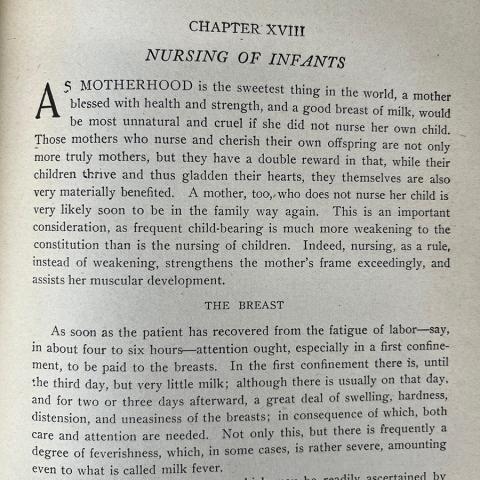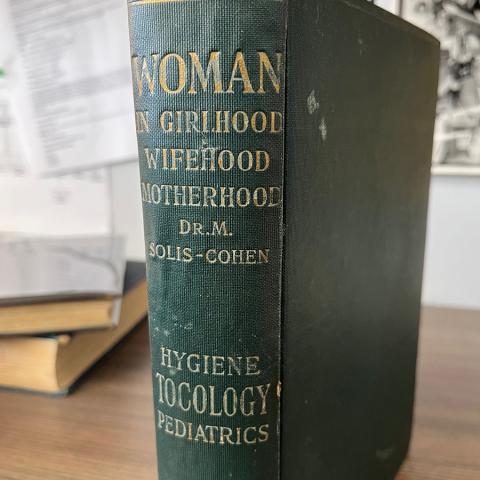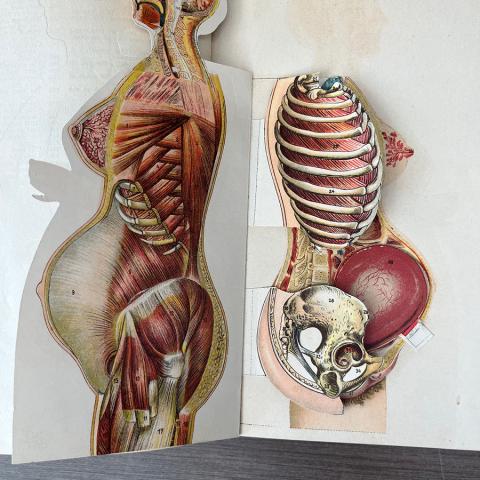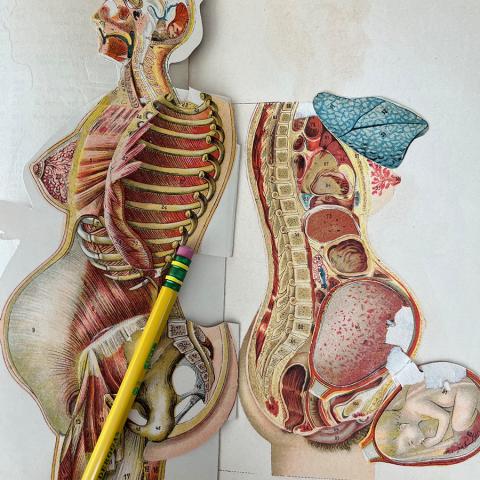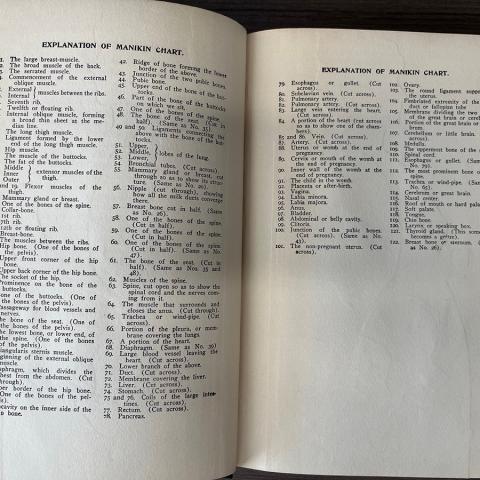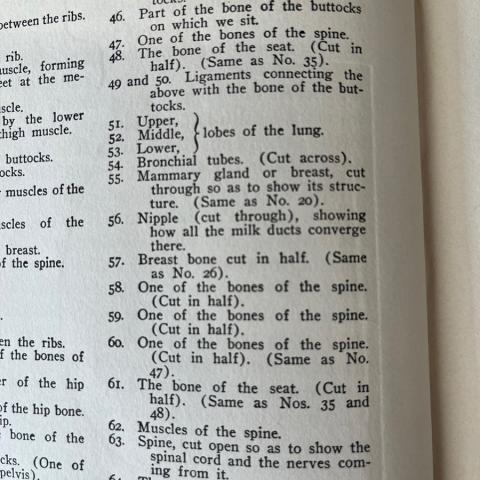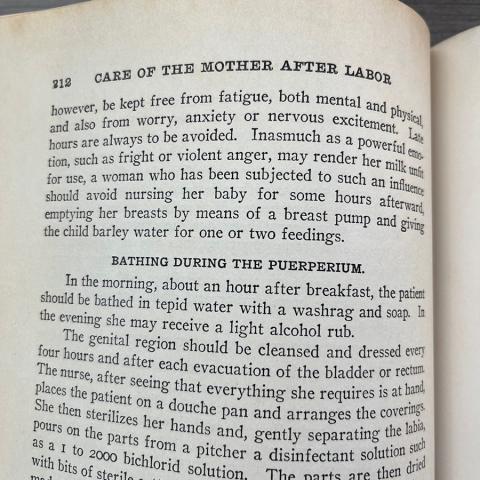Matrescence: The Transition into Motherhood
November 11, 2025
Matrescence is the transition into motherhood. Like adolescence, this life changing transition comes with physical, emotional, cognitive, and psychological changes for all who become a mother. This includes those who carry the child to term and those who become a mother but do not necessarily give birth. This transition continues to be an understudied area. It is a shame that such a profound human experience is not more understood. Special Collections & Archives holds rare books dating back to the late 1800s that highlight earlier views on birth, motherhood, and breastfeeding. Some things remain the same and some have changed.
The Physical Life of Woman; Advice to the Maiden, Wife, and Mother by Geo H. Napheys, A.M., M.D. was published in 1885. The preface outlines the lack of understanding of women’s health at that time (which prevails today), and the fact that these things were not spoken of in polite society: “Such information, if universally possessed, cannot but result in great benefit to the individual and the commonwealth. The difficulty is to express one’s self clearly and popularly on topics never referred to in ordinary social intercourse.” This text holds a large section on the, “Influence of the mother’s mind over the nursing child,” highlighting negative and positive emotional effects on milk supply and quality. At one point stating, “apprehension felt in regard to a drunken husband has been known to arrest the supply of this fluid.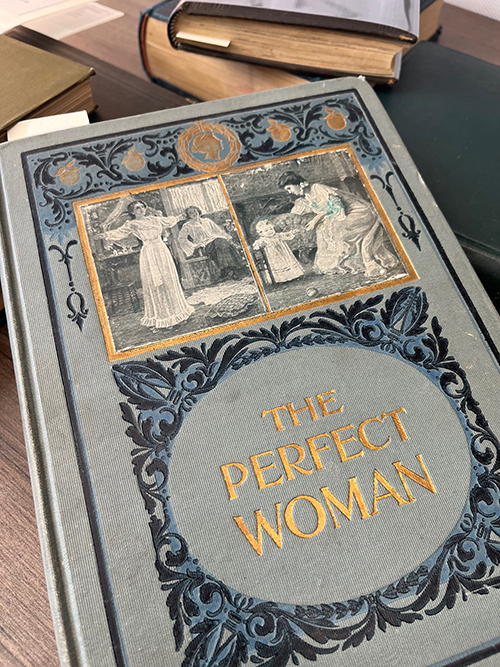 On the other hand, the secretion is often augmented, as every mother knows, by the sight of the child, nay even by the thought of him, causing a sudden rush of blood to the breast known to nurses as the draught.” Today that would be called the “letdown.” This knowledge holds strong today. In fact, when a mother visits a Mamava lactation pod the app to open the private lactation room offers a place to save a photo of your child “to help with letdown.” The Physical Life of Woman goes on to recount rather dramatic stories of poisonous milk from mothers experiencing poor physical or emotional health.
On the other hand, the secretion is often augmented, as every mother knows, by the sight of the child, nay even by the thought of him, causing a sudden rush of blood to the breast known to nurses as the draught.” Today that would be called the “letdown.” This knowledge holds strong today. In fact, when a mother visits a Mamava lactation pod the app to open the private lactation room offers a place to save a photo of your child “to help with letdown.” The Physical Life of Woman goes on to recount rather dramatic stories of poisonous milk from mothers experiencing poor physical or emotional health.
Perfect Womanhood for Maidens, Wives, Mothers: a book giving full information on all the mysterious and complex matters pertaining to women was first published in 1901 and written by Mary R. Melendy. Notably, Melendy was a woman holding an M.D. and Ph.D. and wrote this book not long after Elizabeth Blackwell became the first woman in the United States to earn an M.D. degree in 1849. Yet, in the preface Melendy maintains the common view of women’s place in society at the time stating, “Women’s Labors and successes, in the various fields and affairs of life are calling daily for more and more attention. While we admire her in her new role, with her efforts toward succusses in society, literature, science, politics, and the arts, we must not lose sight of her most divine and sublime mission in life – womanhood and motherhood.” Regarding the benefits of breastfeeding Melendy says, “A mother, too, who does not nurse her child is very likely soon to be in the family way again. This is an important consideration, as a frequent child-bearing is much more weakening to the constitution than is the nursing of children.” In other words, the thought is that a woman cannot get pregnant again if she is actively nursing an infant. We know this not to be true now. But, her second statement warning against getting pregnant too soon after a birth is maintained today. According to the American College of Obstetricians & Gynecologists, “The most benefits come from waiting at least 18 months to get pregnant again.”
Woman in Girlhood, Wifehood, Motherhood; her responsibility and her duties at all periods of life was published in 1906. This text is written by a male doctor, Myer Solis-Cohen, A.B., M.D. The introduction has a fascinating mannequin displaying nearly the full anatomy of a female body including the mammary glands and milk ducts. 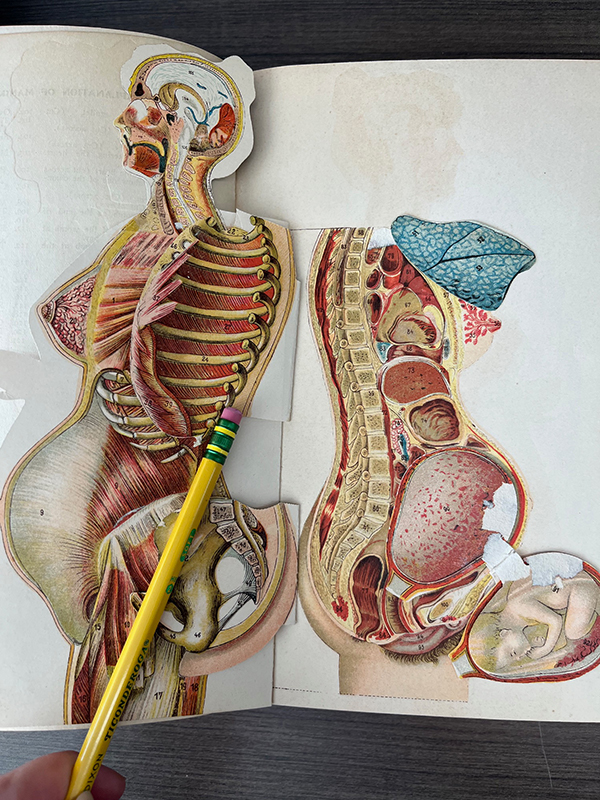 This book includes some curious recommendations. For example, “after each feeding the baby’s mouth should be washed out with a soft rag dipped in a solution of boracic acid in the proportion of 10 grains to the ounce of water.” Then, the author warns against upsetting the mother while she is breastfeeding “inasmuch as a powerful emotion, such as fright or violent anger, may render her milk unfit for use, a woman who has been subjected to such an influence should avoid nursing her baby for some hours afterward, emptying her breasts by means of a breast pump and giving the child barley water for one or two feedings.” This text also recommends giving infants water to drink in addition to breastmilk, which is not recommended today.
This book includes some curious recommendations. For example, “after each feeding the baby’s mouth should be washed out with a soft rag dipped in a solution of boracic acid in the proportion of 10 grains to the ounce of water.” Then, the author warns against upsetting the mother while she is breastfeeding “inasmuch as a powerful emotion, such as fright or violent anger, may render her milk unfit for use, a woman who has been subjected to such an influence should avoid nursing her baby for some hours afterward, emptying her breasts by means of a breast pump and giving the child barley water for one or two feedings.” This text also recommends giving infants water to drink in addition to breastmilk, which is not recommended today.
A look back at texts published over 100 years ago reveals both stark shifts in practice as well as deep knowledge that remains the same today regarding motherhood. These texts are part of the Vern and Bonnie Bullough Collection on Sex and Gender which was established by former CSUN faculty member Vern Bullough in 1973. Its purpose is to document social attitudes and studies of sex and gender from ancient times to the present, in support of CSUN curricula and research. The collection is comprised of books, periodicals, manuscripts, and archival materials. Visit Special Collection & Archives to explore these and more!
Image Gallery
Post tagged as: special collections, rare books, united states
Read more Peek in the Stacks blog entries